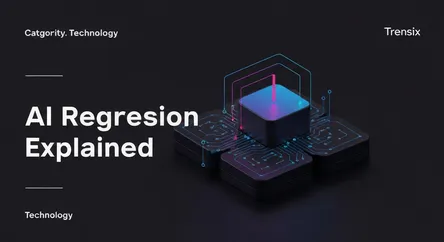Technology
AI Regression Explained

Discover what regression is in AI and machine learning. Learn how this statistical technique is used for predictive modeling to forecast future outcomes.
What is it?
Regression is a supervised machine learning technique used to predict a continuous numerical value, such as a price, temperature, or sales figure. It works by identifying the statistical relationship between a dependent variable (the value being predicted) and one or more independent variables (the inputs). Common types include Linear Regression, for finding a straight-line relationship, and other advanced forms for more complex data. It's a foundational method in statistics and AI for understanding how different factors influence an outcome.
Why is it trending?
Regression is a cornerstone of data science due to its power and relative simplicity. As businesses collect vast amounts of data, the need for reliable forecasting tools has exploded. Regression algorithms are fundamental to predictive analytics, from financial market analysis to supply chain optimization. A key advantage is their interpretability; unlike some "black box" models, regression results are often easier for humans to understand and act upon, making them a trusted tool for data-driven decision-making.
How does it affect people?
Regression models influence many aspects of daily life. They power real estate estimators that predict a house's value, help forecast stock prices, and enable weather apps to predict temperatures. In healthcare, regression can help estimate a patient's risk for certain diseases based on various factors. E-commerce platforms use it to forecast product demand, which affects inventory and pricing. It’s a key technology that turns historical data into future insights that shape business strategies and personal experiences.